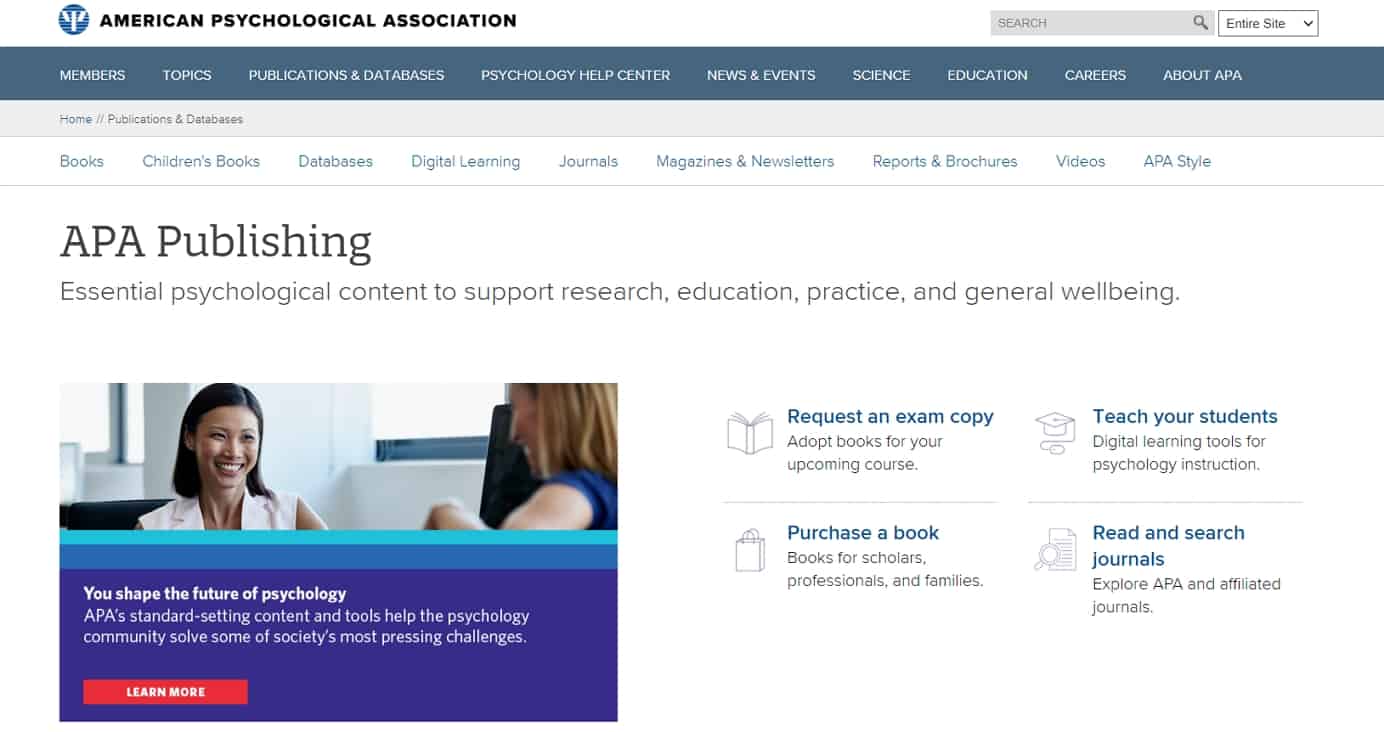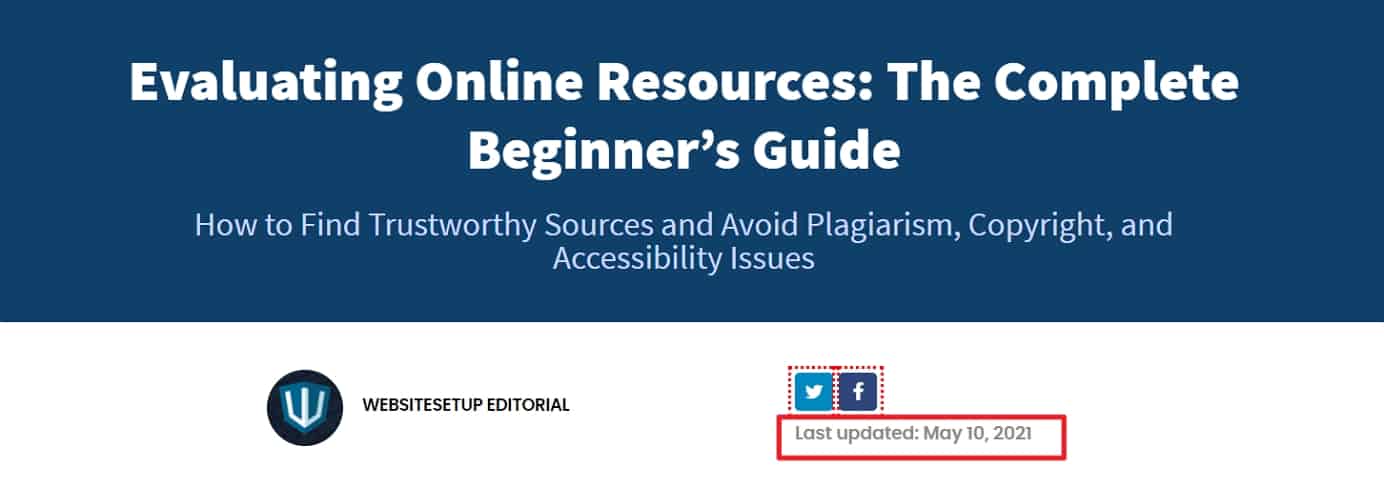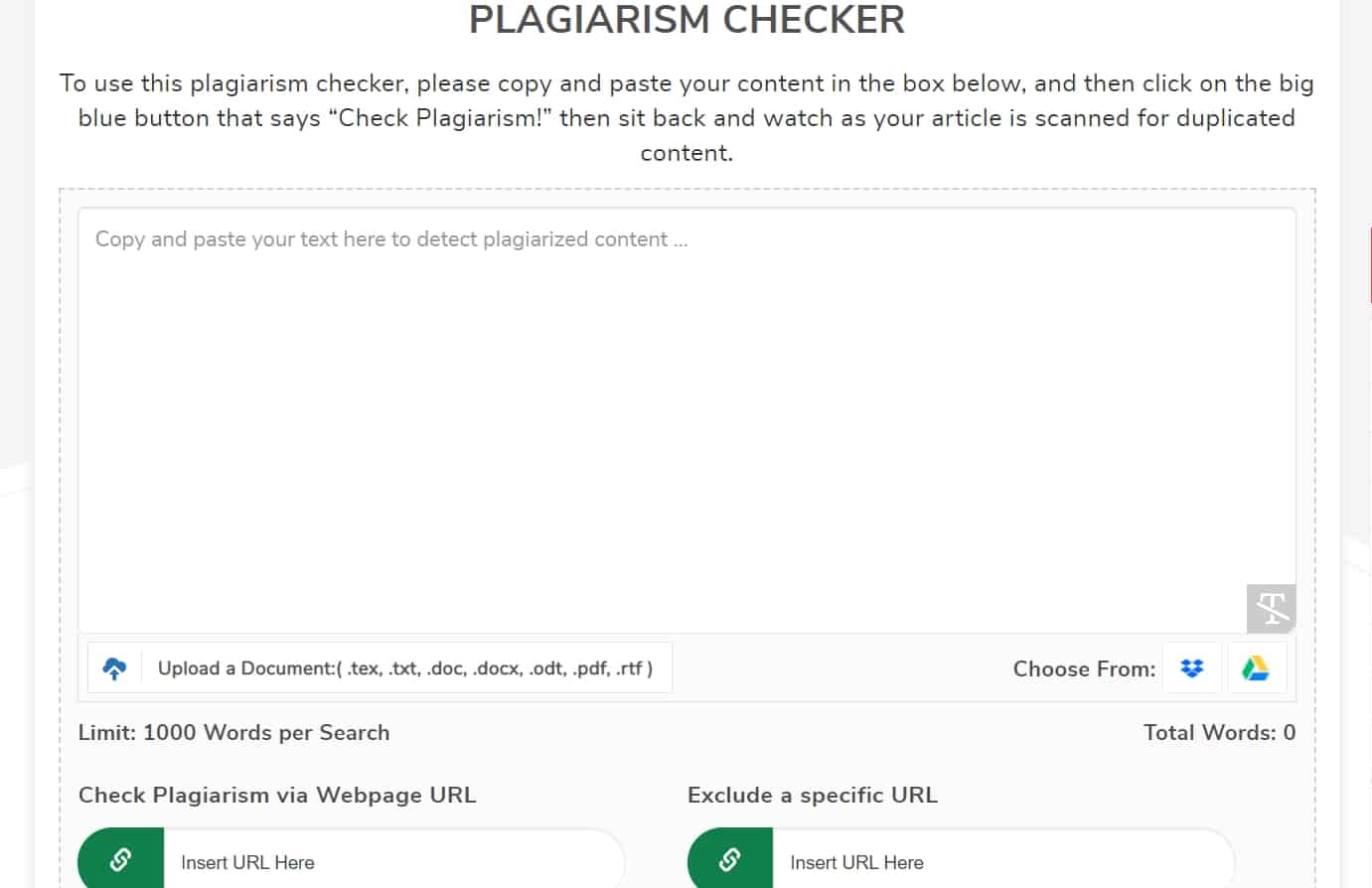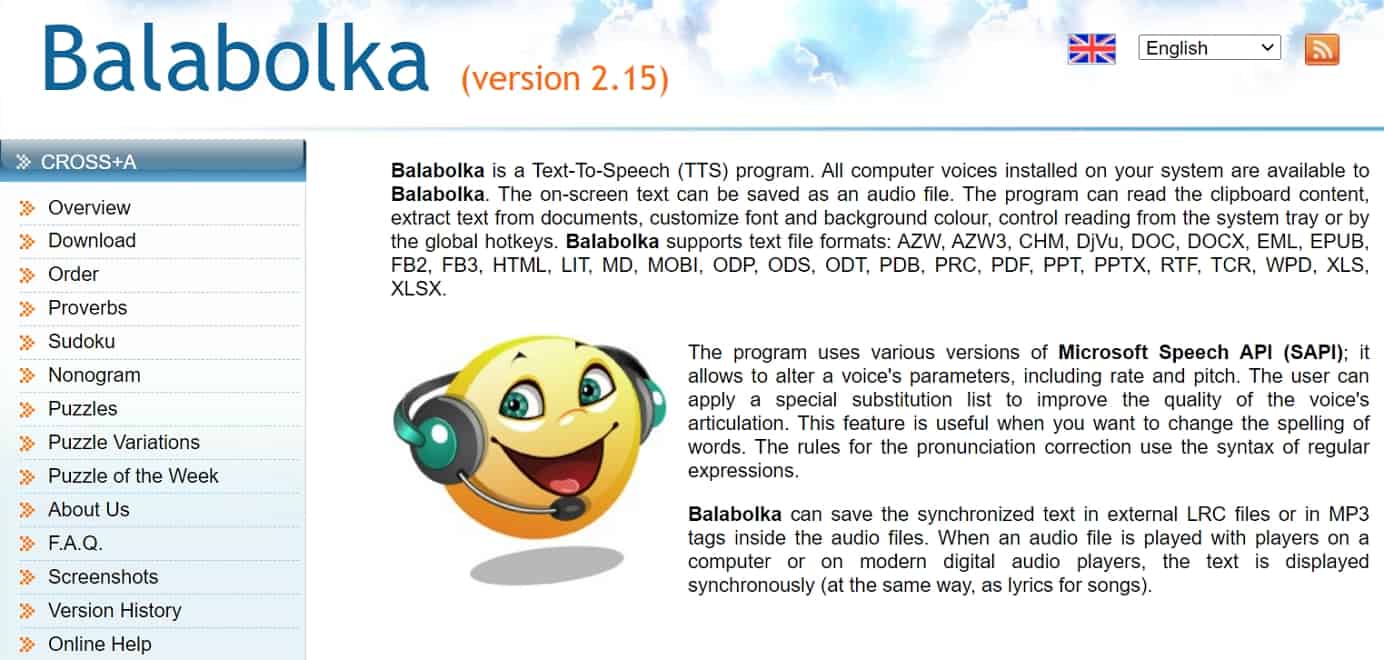Everyone and anyone can create content online. Today, it’s hard to determine whether an Internet resource you find is authentic or not.
Evaluating online resources is an important step in any research process. Identifying trustworthy content should be part of your research journey.
If you’re looking for factual resources, search through newspaper publications, TV news, journals, official pamphlets, books, and magazines. But, nowadays people opt to search for information on the Internet. They tend to believe anything posted on the Internet without even checking for credibility.
Satire and fake news sites publish erroneous data; people believe these sites because of their persuasive, believable nature. If you’re looking for a credible resource, you should avoid hoax sites as this may affect the veracity of your study.
Meanwhile, many content publishers rely heavily on copying content and owning those as theirs to get decent followership. Duplicating content and passing it as if it is their own content is copyright infringement or plagiarism.
In this guide, we will help you improve your knowledge and skill in evaluating online resources. We will guide you on how to check a resource for authenticity and credibility.
Moreover, we will discuss skills that you will need to assess as resources such as speed reading and skimming. As an evaluator, you should be familiar with the different citation and referencing styles. Also, we will review several content issues like plagiarized content, DMCA, and copyrights, and web content accessibility.
Table of Contents
Evaluating Online Resources
There are several aspects that you should look for in evaluating online resources. You should check:
- Who published the content (Authorship)
- Where was it published (Publication)
- When was it published (Currency and Relevance)
- The truthfulness and integrity of the facts (Accuracy)
- How it is written and presented (Purpose and Objectivity)
- And what references are cited in the article (Links)
1. Authorship
The author of the content is a concern when considering the eligibility of the content. First of all, the author should be an expert on the subject discussed in the article. He should have the credentials to back up his knowledge of the subject matter.
Usually, the information about the author can be found on the website along with the content. The name of the author can be found below the title, on the side of the article, or at the bottom. Sometimes, more information on the author is found below the article, also known as an author’s bio. An author may be credited if he is oftentimes mentioned in other authoritative websites.

But, it is not easy to verify an author’s background through the Internet. Website articles and resources rarely have fact-checkers or editors for copyediting an article. Another thing to consider is that authors vary in tone and purpose. Some do it for their personal blog. Other authors are advocates of a cause, while others do it for marketing their product or service.
2. Publication
If the information about the author is not present, the publisher of the resource article can be checked for authority.
Take a quick look at the website. Are you familiar with the publication name? Is the publisher reputable and credible on the subject matter? Look at the website name, its logo, the URL of the website, and other indicators that can prove its reliability on the topic. One quick look at the URL can help you determine if it’s a reliable source or not. Trustworthy websites end in .org, .edu, .gov, or any recognizable web address.

Another way to check the publisher’s site is via its About Us and Contact Us page. These pages will contain information about the publisher. You can countercheck their details by conducting another search.
Reliable websites publish content that is relevant or under the same scope as the resource page that you found. Check how often do they publish content and if they published related content as well. News and publication websites (NYTimes, BBC, The Washington Post, TIME, etc.), are authority sites for facts. Consider the resource’s credibility if the publisher has mentioned or been mentioned by authority sites.
3. Currency and Relevance
In conducting research, the currency and timeliness of data are important in making inferences for data gathering and analyses.
Information changes throughout the years. On the Internet, it’s easy to get lost among the billions of data available at your fingertips. Even academic articles such as thesis and investigative reports can have obsolete data. Out-of-date content has information that is not relevant or applicable in today’s time.
How can you determine if the content that you’re looking at isn’t outdated? How do you check if the data you have is current and timely?
Look for the date of publication. Oftentimes, it is located near the title of the resource. You can look for the date at the side information of the article, and even at the end of the article.
Here’s an example:

The American Psychological Association (APA) is used as a citation style in academic and scholarly articles for social sciences. Since it started in 1929, the APA style has changed over the years and it is in its 6th edition.
With that said, updated resources oftentimes tag relevant statistical data with proper citations and referencing. Aside from that, these resources mention other resources and link back to them, regularly updating any link references should they find that those links are obsolete.
4. Accuracy
In writing, accuracy refers to a writer’s correctness in using the language system. This means that the writer’s use of grammar and vocabulary should be correct and as good as it could be.
Minimal errors are virtually present in all kinds of publications, but poor spelling and grammar can easily reflect how careless an author is, and this may result in distrust. Again, web resources are prone to technical errors since not all web publications go under the scrutinizing eye of a copy editor.
Accuracy also refers to whether an online resource is correct with its facts. Online resources can be verified easily through a quick search on the Internet. Other resources provide a reference list that can help in double-checking facts cited in the article.
5. Purpose and Objectivity
An online resource should teach, inform, explain, or persuade.
By reading the article, it should become evident what the article aims to impart to its readers. The author should not be biased with his views reflected in the article unless stated otherwise. You should comprehend whether the content is backed up with facts or based on opinion and propaganda. The content should show its intended audience.
6. Links
Links are used for citing and to credit references found on other websites. Links used on the content should be useful and relevant to the topic of the content.
Make sure you only link to timely, relevant content. Meaning, link to the sites from the first page of relevant SERPs and perform a yearly link audit to check if the content is still relevant. For example, if the links within the content proceed to a 404 page or “Not Found” the content may be outdated.
Checklist on Evaluating Websites
We’ll help you assess online resources easier with this concise infographic checklist:

Improve Your Evaluation Skills
Effective evaluation of online materials requires a set of skills. To effectively evaluate online materials, you must be able to do proper speed reading and skimming of content, as well as citing references. Possessing these skills will give you the ability to objectively and successfully critique online materials. Let’s discuss in detail how these skills can help you in evaluating content.
Speed Reading and Skimming
Before you will be able to evaluate any material, you will have to read it first. Going through the whole thing, even up to every punctuation mark, can eat up your time. Reading entire materials will not be practical especially if you have a lot of materials piled up. Therefore, it is vital that you possess speed-reading and skimming skills.
The average reader can run through approximately 200 words per minute. A good reader can reach 400 to 500 without sacrificing comprehension of what he had just read. Any more than 500 words risk losing comprehension, so going beyond that is not advisable. Speed reading is, therefore, a fast-paced manner of reading that retains understating of the material.
There are two speed reading techniques:
- Scanning is a very quick running through of the material in an attempt to find a specific piece of information. If you pass through an article very quickly in search of a name, a date, an amount, or the likes, what you are doing is scanning.
- Skimming, on the other hand, is rapid reading that goals to get the main ideas contained in the material in an effort to get the general overview of the content. Skimming is then considerably slower the scanning.
In trying to evaluate online materials, what you would most likely do is skim through them. Unless, of course, you’re trying to look for specific information that you are trying to verify. Skimming through an article allows you to quickly complete a material without losing its essence.
Skim effectively and finish a lot of materials with less time. Always remember that comprehension must never be sacrificed for speed. Speed reading is a total waste of time if you did not understand what you have just read.
Citation and Referencing Styles
In order to check the validity of the facts stated in online material, references must be presented so that you can verify them. It is the responsibility of the author of the material to include citations and references in a way that follows standard referencing styles, but as the evaluator, you must also be aware of how to do this so that you can use it as criteria in critiquing the said material.
First of all, have a check on the references for the material. Make sure that these are credible resources. A lot of satirical sites and content are available on the web and one may easily come across them and eventually use them as part of the material. You must be careful enough to distinguish the validity and credibility of the site or content that you’re basing material on.
There are a couple of ways to include ideas from other materials into your own. It can be done by quoting, summarizing, or paraphrasing:
- Quoting is done by directly placing portions or parts of what was included in your resource material. It is a word-for-word placement of the resource material.
- Summarizing is providing a shorter version of the resource material while acknowledging that your material is based on the information you got from the source.
- Paraphrasing is trying to reword your source material but with the necessary attribution of where you got the idea from.
These three methods of including ideas from other materials should have a list of references. This list of references must obey one of the referencing standards and styles. There are two prevailing referencing styles that are being followed: the MLA format, and the APA format.
The Modern Language Association (MLA) format is distinguished by the following characteristics:
- Authors’ and editors’ names are spelled out completely. If there are more than three authors, list the first one only and then write “et. al” as a substitute for all other authors.
- Important words in a title are capitalized.
- The shortened name of the published is placed.
- Only the city is placed in the place of publication.
- Dates are placed at the end of the citations.
- The second and subsequent lines are indented while the first line is made to align with the left margin.
- The in-text citation uses the author’s name and page.
On the other hand, the American Psychological Association (APA) format is as follows:
- All authors are listed and use the last name, and then the first initial.
- Only the first word in a title is capitalized.
- Full names are used for publishers.
- Includes state abbreviations for the place of publication.
- Dates are placed after the author’s name.
- The first line of the citation is indented while subsequent aligned to the left margin
- In-text citations use the author’s name, date of publication, and page number.
 MLA vs APA style citation. Source.
MLA vs APA style citation. Source.
Always remember that citation is done because you have the responsibility to give credit to the author of your source material. You would not want to steal other people’s work. Also, you would not want other people from passing off your work as their own so you must also do the same for the work of others.
The MLA Style Center is the best and most interactive guide you can check out for your research. Aside from a citation guide, they also have a research format guide for your paper and an FAQ section.
Meanwhile, to see how APA citations are usually written in reference lists, visit this guide made by The University of Western Australia. There you can check how different resources are cited, such as Books and eBooks, Journal articles, Newspapers & Magazines, and Web sources (pages, blogs, social media, etc).
Content Issues: Plagiarism, Copyright, and Accessibility
Plagiarism, copyright infringement, and problems with accessibility are some of the issues that you may stumble upon when dealing with online content. Let’s discuss in detail the implications of each of these content issues.
Plagiarism: Problems of Duplicity
One of the biggest sins you can commit while writing online materials is plagiarizing, which is the omission of reference to the original source of information, which gives the impression that it is the writer of the material at hand who originally said a statement even if that is not the case.
This can be done on purpose or as a result of neglect. Even if it is by mere neglect that the citation was not made, plagiarism is still inexcusable. Plagiarism can be committed against written or spoken texts, and even against graphical content such as photos, drawings, sketches, paintings, etc.
As an evaluator of online materials, your goal is to identify whether the author of the material you are assessing committed plagiarism, may it be partial or total in nature. Plagiarism should never be tolerated, and the evaluator should ensure whether or not plagiarism was committed in any piece of material that he handles, especially those that the general public can see.
Small SEO Tools has a great tool for plagiarism check that you can use for your own content and also for monitoring other online resources.

DMCA and Copyright Issues
Merriam-Webster dictionary defines copyright as the exclusive legal right to reproduce, publish, sell, or distribute the matter and form of something (as a literary, musical, or artistic work). With a copyright, you can sue others who try to reproduce your work without your permission or consent. It is a protection given to the original creator, or to whom he grants the said protection, to benefit from his work.
In essence, violation of copyright (or more commonly referred to as copyright infringement) and plagiarism are similar. However, copyright infringement backed up by a legal construct while plagiarism is more of an ethical issue for academic, journalistic, or corporate institutions. Both of these promote originality and creativity as they protect the original creator of the work.
Copyright infringement and plagiarism do not go hand-in-hand. Not all cases of copyright infringement are cases of plagiarism as well, and vice versa. You can plagiarize content that does not qualify for copyright, and you can also commit infringement even if you have provided the necessary citation.
When talking about copyright, the Digital Millennium Copyright Act (DMCA) almost always follows. The DMCA is a copyright law of the United States which was made to implement two 1996 treaties of the World Intellectual Property Organization (WIPO), as well as to heighten the penalties given to those who commit copyright infringement.
As an evaluator, you must deal with copyright infringement issues before matters get worse. It is your duty to uphold the observance of applicable laws and ethical standards.
Content Accessibility
Roughly 650 million people, or 10 % of the world’s population, experience some form of disability, and disability prevalence is higher for developing countries.
A significant amount of this population has access to the Internet, but sadly, not all can access content found on the Internet. With the increasing demands for website accessibility, several countries have already pushed for accessibility legislation to support disabled users’ rights to information.
Disabled users commonly addressed by these efforts are those with visual, mobility, auditory, seizures, and cognitive disabilities. Those with visual disabilities include low vision and color blindness. Motor disabilities include those who lack muscle control due to tremors or neurological conditions. Hearing impairments such as deafness are included in auditory disabilities.
Meanwhile, people with seizures are a special case; those triggered by visual strobes or flashing effects are mainly affected in this category. Last but not least, cognitive disabilities range from developmental to learning disabilities.
How Does Website Accessibility Help These Users?
Website accessibility helps users to understand and access a website’s information with the help of certain tools that aim to assist them in browsing a website. But, if a website is not optimized for accessibility, disabled users will have a hard time browsing a website. That said, building a user-friendly website is very important.
There are available tools for the auditory and visually challenged to interact and use the Internet. Text-to-speech software and/or text-to-Braille hardware help blind users to access a website. For poor-sighted users, having a function to make the texts enlargeable would be helpful especially for those without prescription glasses. Highlighting linked texts through underlines or contrast highlights will aid visually impaired users, especially those who are color blind.
 Those with disabled motor abilities will benefit from large clickable areas like buttons on a website since they will lack precision in clicking small buttons. Moreover, coding a website that will let users navigate the website easily via a keyboard or a single switch device can help them browse through the website even without using a mouse or a standard keyboard.
Those with disabled motor abilities will benefit from large clickable areas like buttons on a website since they will lack precision in clicking small buttons. Moreover, coding a website that will let users navigate the website easily via a keyboard or a single switch device can help them browse through the website even without using a mouse or a standard keyboard.
Today, playing videos has been less complicated as well. Those with hearing complications can now watch and understand the context of these videos through closed-captioning or via sign language. Meanwhile, flashing effects on websites are known to trigger seizure attacks. Minimizing or fully avoiding these effects will not be put those who are prone to seizure at risk.
Developmental or cognitive disabilities perhaps are the biggest challenge of them all. With various content available in different formats and in different contexts or degrees of reading difficulty, those who have a difficult time comprehending this content will shy away from a resource. Ideally, resource content should be easy to understand, written in plain language, and equipped with instructional diagrams and even audio-visual aids.
Resources to help with accessibility evaluation are described in Evaluating Web Accessibility Overview.
For further reading
Evaluation of online resources is an important step in any research process. We hope this article gave you a better idea of how to check the credibility of an author or a website and what kind of techniques to use to determine the accuracy of online sources.
For further reading, you can check out these links:
- APA 7 referencing style: Introduction.
- How to evaluate information, from social media to scholarly articles.
- Evaluating Internet Resources.
- The MLA Style Center. Writing resources from the Modern Language Association.
